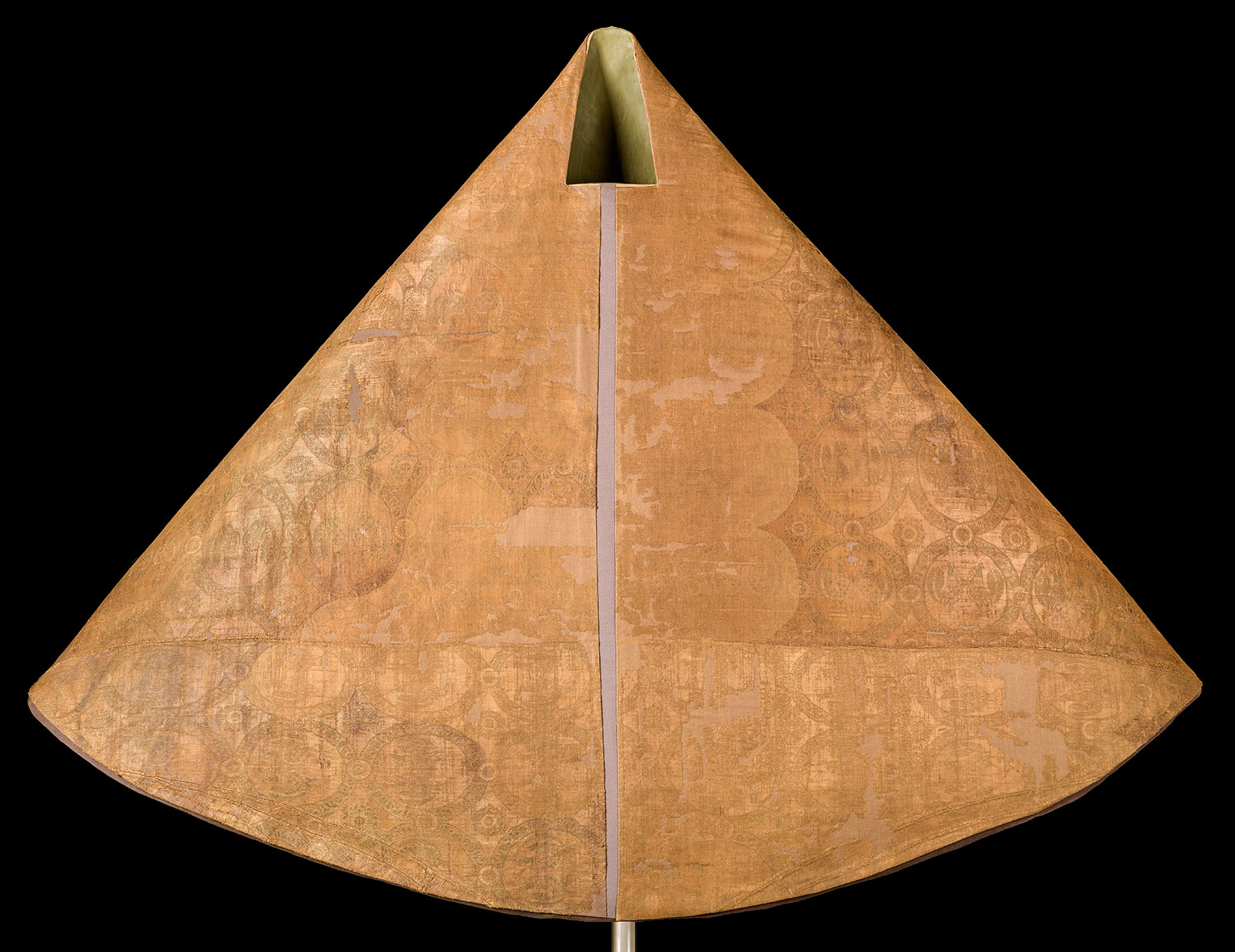Chasuble of Saint Ermengol

This piece of clothing was erroneously believed to be a cope for many years. Probably made in central Asia between the thirteenth and fifteenth centuries, it is crafted of Samite, a highly prized silk fabric, and its sole decorative motif repeated throughout the piece is a circle with two birds facing each other. According to tradition, it was wrapped around Saint Hermengaudius’s body. The fact that it is one of a handful of pieces of this type conserved in our country makes it even more invaluable.
Saint Ermengol, or Hermengaudius
Bishop Ermengol, or Hermengaudius, or was considered the patron saint of the diocese of Urgell almost immediately after his death. Devotion to him materialised in a series of works, including the polychrome wooden urn from the seventeenth century; the gilded Saint Ermengol altarpiece in relief from the eighteenth century, which is currently displayed in the Cathedral; and the silver urn by Pere Lleopart from the eighteenth century. These are joined by the mural fragments from the Cathedral depicting Saint Ermengol, which are currently at the Bilbao Fine Arts Museum and the Maricel Museum of Sitges. Saint Ermengol and Saint Odo are the most representative bishops from the Romanesque period. They were major driving forces behind the cathedrals built in the eleventh and twelfth centuries, respectively, while also advocating against drought and floods.







 Visit the Museu Catedral de la Seu d’Urgell
Visit the Museu Catedral de la Seu d’Urgell 